Hole in the Clouds
Nov 3, 2011
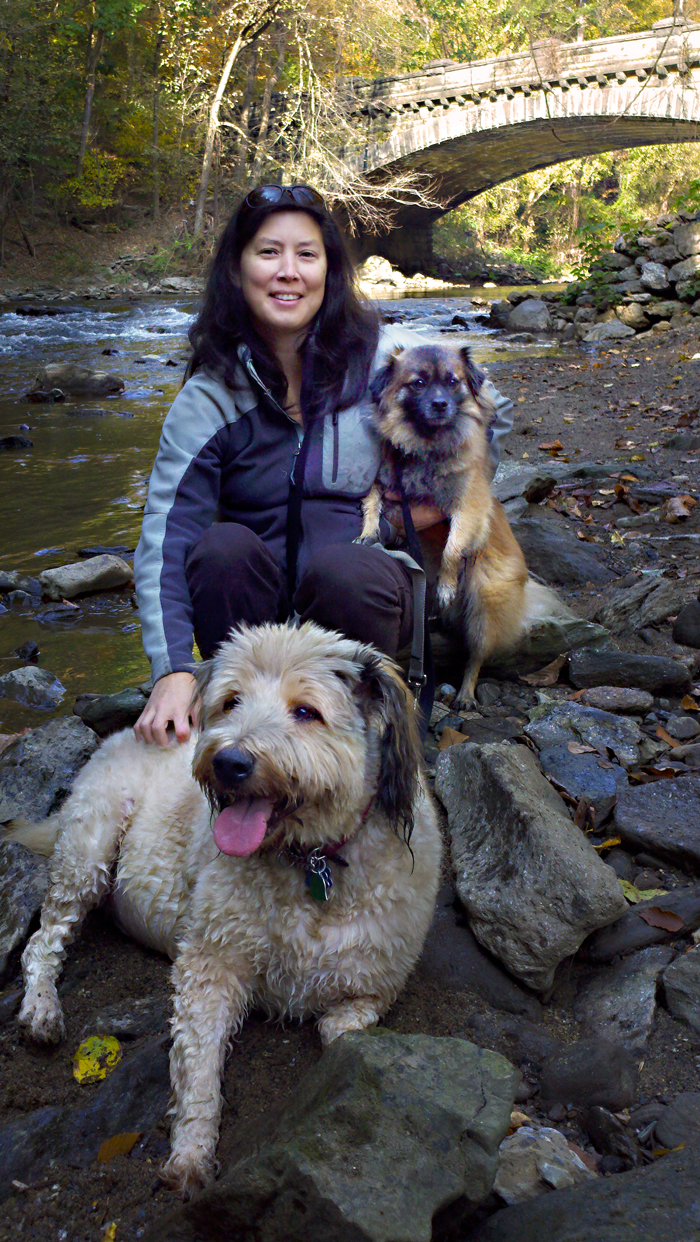 Our neighbor Carolyn Duffy poses for a snapshot along Wissahickon Creek in Philadelphia's Fairmount Park, with her dogs Max and Toby. The big dog, Max, must really like Fairmount Park because he is notorious for making all the decisions with respect to where they'll go on walks and how long they'll stay out. He weighs well over a hundred pounds, and if he doesn't want to go somewhere, it's probably just as well if you don't bother trying to go there.
Our neighbor Carolyn Duffy poses for a snapshot along Wissahickon Creek in Philadelphia's Fairmount Park, with her dogs Max and Toby. The big dog, Max, must really like Fairmount Park because he is notorious for making all the decisions with respect to where they'll go on walks and how long they'll stay out. He weighs well over a hundred pounds, and if he doesn't want to go somewhere, it's probably just as well if you don't bother trying to go there.
landscape
animals
Philadelphia
Carolyn Duffy
dogs
creek
park
Fairmount Park
(Image credit: Sheila)
Nov 19, 2011

This is something new for Philadelphia, and perhaps for the American urban scene in general: a permanent concrete ping pong table, with paddles and balls stored underneath, recently installed in the grass strip alongside Benjamin Franklin Parkway, about halfway between city hall and the art museum.
sports
cityscape
fall
streetscape
park
ping pong
table tennis
(Image credit: Janet Goldwater)
Jan 6, 2012
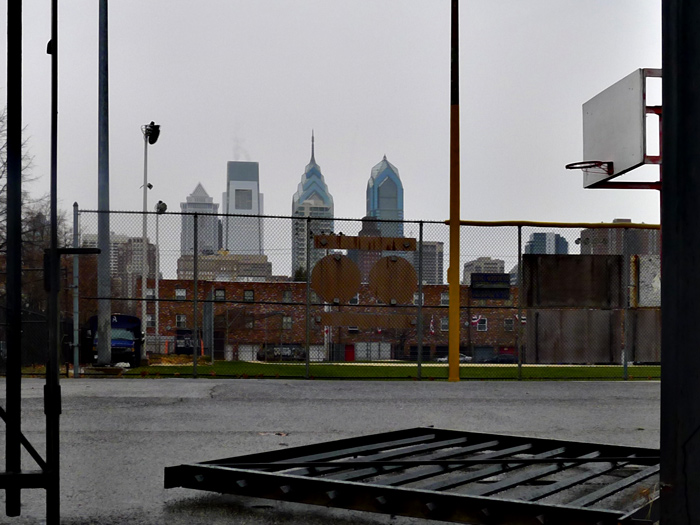 Somebody busted down the gate to the basketball court at Marian Anderson Park in our neighborhood. Behind the court, the meticulously maintained baseball field is protected by a much more secure fence.
Somebody busted down the gate to the basketball court at Marian Anderson Park in our neighborhood. Behind the court, the meticulously maintained baseball field is protected by a much more secure fence.
cityscape
Philadelphia
skyline
park
Marian Anderson Park
playground
(Image credit: Hank Stein)
Sep 26, 2012
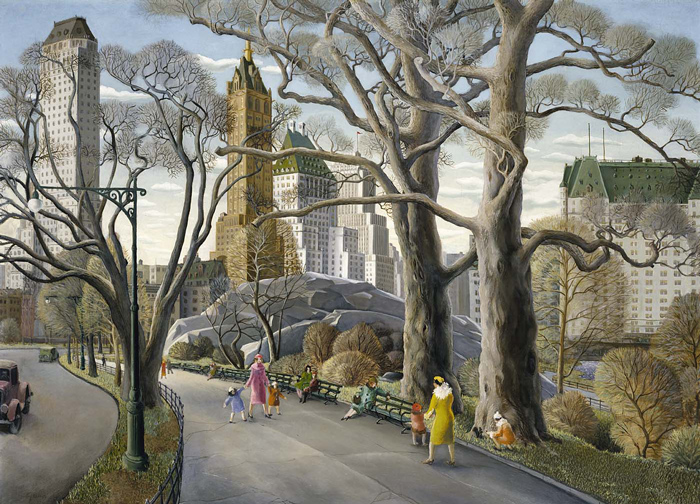 In 1934, Carl Gustaf Nelson painted life in New York's Central Park, above, the way life ought to be; in 1932 and 1933, photographers from the New York Daily News aimed their cameras at Central Park's Hooverville, below, revealing life that was not being lived the way people ought to live. Both images tell something of the story, in an upstairs-downstairs sort of way.
In 1934, Carl Gustaf Nelson painted life in New York's Central Park, above, the way life ought to be; in 1932 and 1933, photographers from the New York Daily News aimed their cameras at Central Park's Hooverville, below, revealing life that was not being lived the way people ought to live. Both images tell something of the story, in an upstairs-downstairs sort of way.
New York's homeless citizens began building shanties in Central Park's Sheep Meadow late in 1931, by which time half the factories in the city had been shut down by the Depression and literally millions of New Yorkers were desperate for food and shelter. In 1930 and 1931 homeless people tried to camp in Central Park, but they were repeatedly arrested for vagrancy; as the economic situation became more and more dire, however, policemen and judges became more sympathetic to the "bums," and official eyes were averted as this and many other Hoovervilles emerged. Some of the shacks were said to be solid brick and stone houses with tile roofs, built by unemployed bricklayers.
The residents of Central Park's Hooverville said they had built their homes along Depression Street. Many of the shanties had furniture and at least one had carpets, but there was no electricity or running water, no sanitary facilities at all. In 1933, the city condemned the dwellings, evicted the residents, and demolished the shantytown. The official justification was public health.
Thus, by 1934, when Nelson painted his picture, Central Park had been officially reclaimed for the sole use of well-dressed, well-to-do people like the ones in the painting, people with warm apartments to go home to and indoor plumbing. The people of Hooverville had moved on, and they would keep on moving on, scraping by, somehow, till a government stimulus program, aka World War II, finally brought full employment back to America.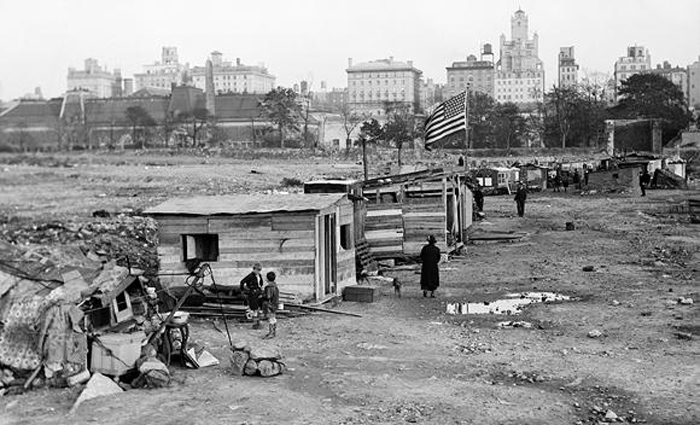
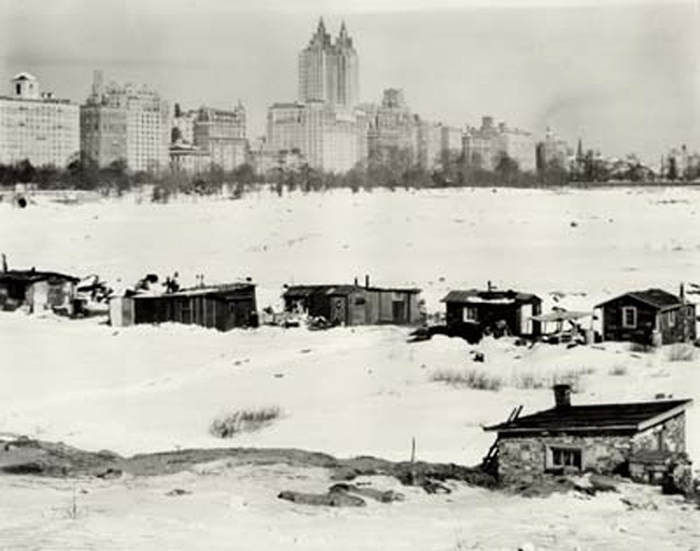
landscape
cityscape
Central Park
children
New York City
skyscrapers
Depression
park
Hooverville
shacks
(Painting by Carl Gustaf Nelson; Photos by New York Daily News)
Mar 13, 2013
 There was a warm spell the other day, and it was a weekend, and there were people dancing in Rittenhouse Square.
There was a warm spell the other day, and it was a weekend, and there were people dancing in Rittenhouse Square.
dancing
cityscape
Philadelphia
Rittenhouse Square
park
Oct 27, 2013
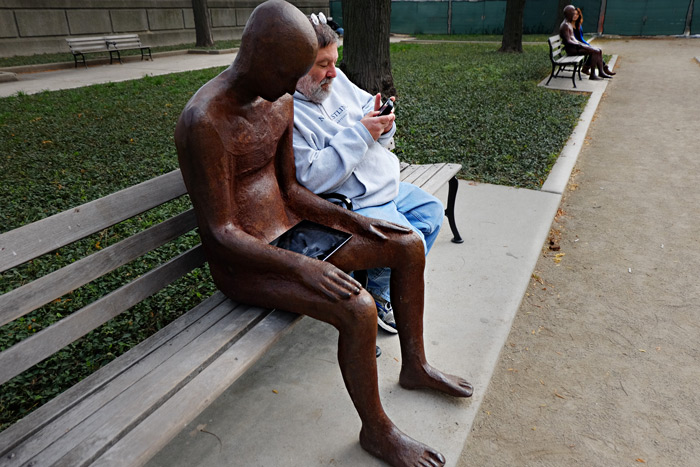
Icelandic sculptor Steinunn Thorarinsdottir populated this garden just south of the Art Institute with aluminum and cast iron people.

garden
Chicago
sculpture
trompe l'oeil
Norman
park
iphone
Segways
iPad
(Image credits: Little Fuji)
Jan 4, 2014
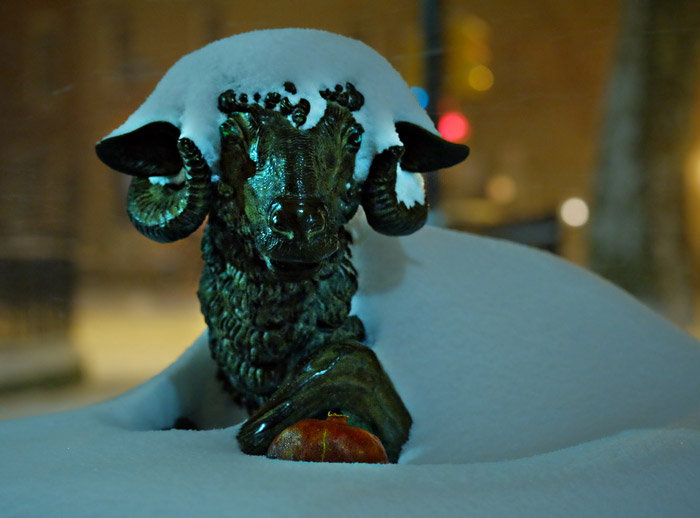 Last night, we saw a ram with a pomegranate in Fitler Square, Philadelphia.
Last night, we saw a ram with a pomegranate in Fitler Square, Philadelphia.
night
winter
sculpture
snow
Philadelphia
fruit
neighborhood
bronze
park
Fitler Square
ram
(Image credit: Hank Stein)
Feb 10, 2014
 Apparently, these tourists in Queenstown, New Zealand, have no intention of sharing their Fergburgers with attentive local ducks.
Apparently, these tourists in Queenstown, New Zealand, have no intention of sharing their Fergburgers with attentive local ducks.
food
New Zealand
ducks
park
Queenstown
(Image credit: Little Fuji)
Jul 28, 2014
 Spruce Street Harbor Park, at the foot of Spruce Street on the Delaware River, is Philly's latest pop-up beer garden. A couple of months ago, this was an unused dock behind the highway; a couple of months from now, it will probably return to nothingness. But for the summer of 2014, thanks to landscaping and logistics from the Pennsylvania Horticultural Society, it's drawing crowds.
Spruce Street Harbor Park, at the foot of Spruce Street on the Delaware River, is Philly's latest pop-up beer garden. A couple of months ago, this was an unused dock behind the highway; a couple of months from now, it will probably return to nothingness. But for the summer of 2014, thanks to landscaping and logistics from the Pennsylvania Horticultural Society, it's drawing crowds.
It's also drawn a lawsuit, from folks who would rather the crowds spend their money in established bars and restaurants. Plaintiffs claim that the "special event" loophole in the city's liquor laws was never intended to legalize semi-long-term operations like the Horticultural Society's beer gardens.
The idea behind the pop-up gardens was booster-ish. By demonstrating the potential of vacant lots around town, it was hoped that developers might invest in permanent improvements. Meanwhile, people could enjoy themselves under the stars.
But with the lawsuit looming, somehow, it just seems like we can't have nice things any more.
landscape
sunset
park
Philly
Delaware River
Jan 31, 2018
 Until a couple of years ago, internet access in Cuba was a tightly restricted privilege; now, however, anybody can go online.
Until a couple of years ago, internet access in Cuba was a tightly restricted privilege; now, however, anybody can go online.
But two big obstacles remain. One is cost; a few minutes of wifi can eat up an entire day's pay for an average Cuban. Thus, although some people do use the web to check for news beyond official government reports, most internet activity in Cuba is focused on phone calls, often video calls, especially to friends and relatives abroad.
The other obstacle to getting online is that wifi is not available in your living room; you have to go to a hotspot, which is often outdoors, in a park or plaza. So Cubans such as the Havanans in the photo above gather at hotspots around town with their phones and tablets.
In the evenings, when the tropical heat is letting up a bit, some hotspots get so crowded that the internet slows to to a crawl and may crash. The govvernment has promised to expand the wifi network and even bring it into people's homes, but little progress has been noted.
That's because of the American embargo, say Cuban officials. And they may be right.
night
streetscape
Havana
Cuba
park
wifi
city life
cellphones
(Image credit: Alexandre Meneghini for Reuters)
 Our neighbor Carolyn Duffy poses for a snapshot along Wissahickon Creek in Philadelphia's Fairmount Park, with her dogs Max and Toby. The big dog, Max, must really like Fairmount Park because he is notorious for making all the decisions with respect to where they'll go on walks and how long they'll stay out. He weighs well over a hundred pounds, and if he doesn't want to go somewhere, it's probably just as well if you don't bother trying to go there.
Our neighbor Carolyn Duffy poses for a snapshot along Wissahickon Creek in Philadelphia's Fairmount Park, with her dogs Max and Toby. The big dog, Max, must really like Fairmount Park because he is notorious for making all the decisions with respect to where they'll go on walks and how long they'll stay out. He weighs well over a hundred pounds, and if he doesn't want to go somewhere, it's probably just as well if you don't bother trying to go there.

 In 1934, Carl Gustaf Nelson painted life in New York's Central Park, above, the way life ought to be; in 1932 and 1933, photographers from the New York Daily News aimed their cameras at Central Park's Hooverville, below, revealing life that was not being lived the way people ought to live. Both images tell something of the story, in an upstairs-downstairs sort of way.
In 1934, Carl Gustaf Nelson painted life in New York's Central Park, above, the way life ought to be; in 1932 and 1933, photographers from the New York Daily News aimed their cameras at Central Park's Hooverville, below, revealing life that was not being lived the way people ought to live. Both images tell something of the story, in an upstairs-downstairs sort of way.







 Until a couple of years ago, internet access in Cuba was a tightly restricted privilege; now, however, anybody can go online.
Until a couple of years ago, internet access in Cuba was a tightly restricted privilege; now, however, anybody can go online.